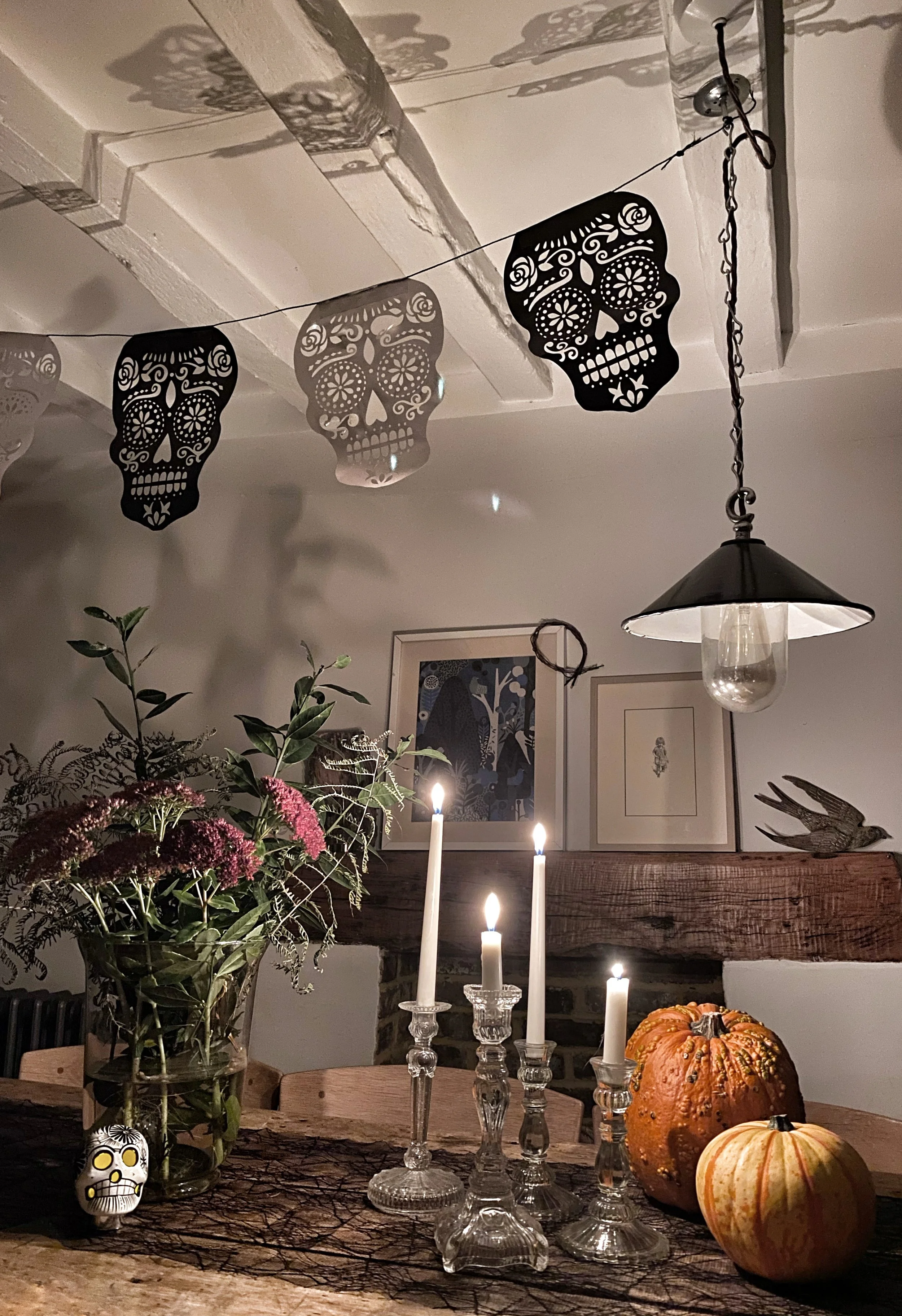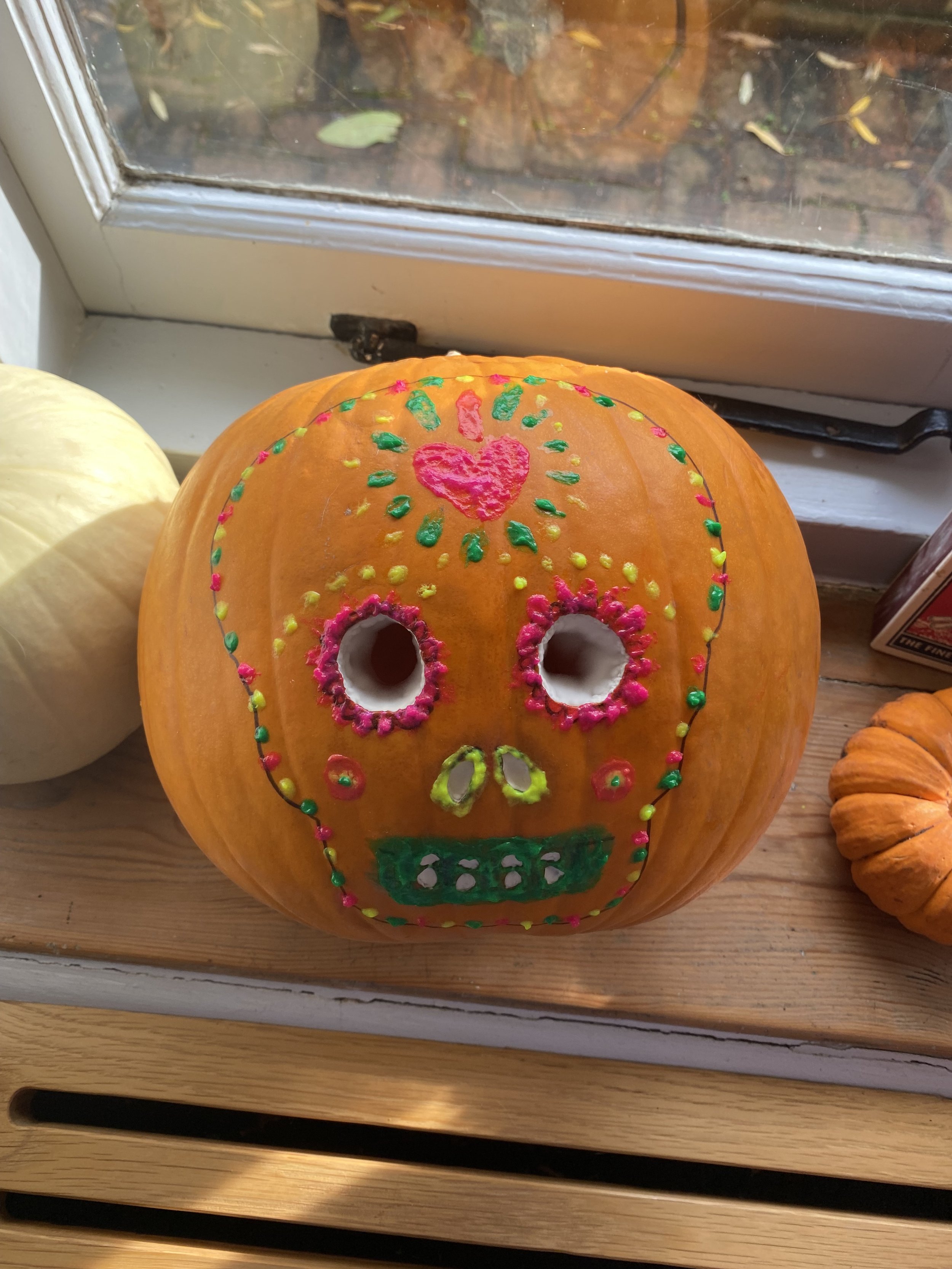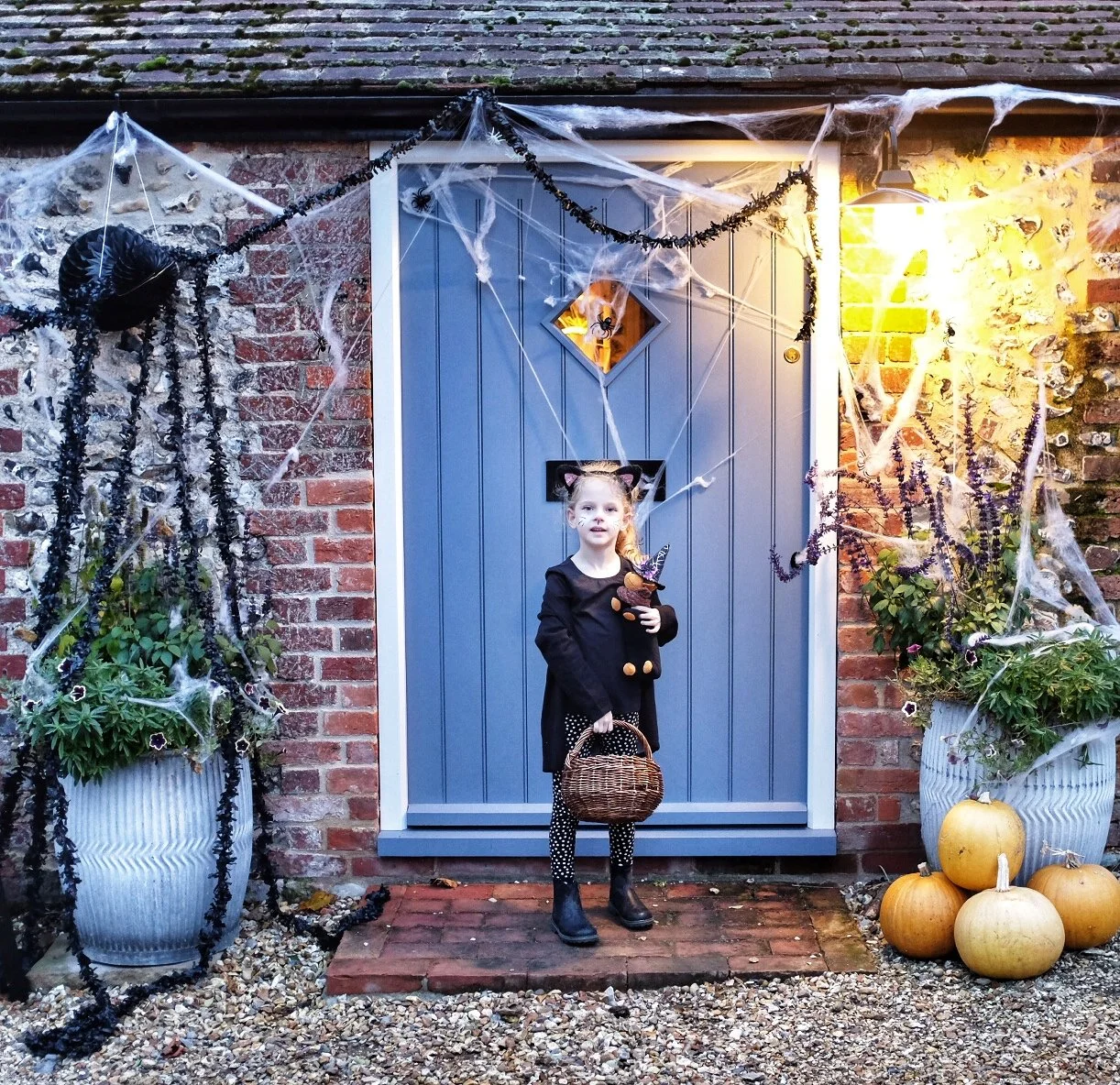Unlike some celebrations, Halloween isn’t just a construction designed to boost profits at Clintons Cards – it’s got deep and venerable roots. The idea of ushering in the colder half of the year exists in many different cultures and similar themes recur; fires and lights to ward off the encroaching dark, games and treats involving apples and nuts, and many traditions of dressing up and divination.
The Romans celebrated a day of the dead known as Feralia, in late October and followed shortly after by a day honouring the goddess Pomona, who was associated with fruit, in particular apples. The Celts took these on and celebrations such as Kalan Gwav or Allan Day in Cornwall, Samhain in Gaelic and Calan Gaeaf in Wales all followed. These traditions all coincided with an important time in the farming calendar; the end of the harvest and a time when animals that have grazed higher pastures throughout the summer are brought back down, closer to home.
Games
Apples and nuts were plentiful and were given as treats and used in games, many of which guessed at the future – the peel of an apple when thrown over the shoulder would reveal the first letter in the name of your future love. Apples were bobbed for in water or hung from lit candleabras, though I don’t recommend you try that one at home! More palatable and less flammable are treacle covered sponge cakes, hung from string and bobbed for with the arms behind the back, leading to lots of laughter and sticky faces. In Cornwall, a shiny red Allan apple might be placed under a pillow so the owner could dream of their future spouse.
Another traditional game was Apple On The Mound. Take a bowl of flour and invert it on to a tray, so you have a large pile of flour. Place a small apple on top with a small sharp knife and play music, while your guests dance round the bowl. When the music stops, the guest nearest must cut a slice from the flour – if any dislodge the apple then they must dive in and bob for it, replacing it back on the top of the pile.
A divination game that could be fun to try with school age children has Victorian origins; children would draw and write symbols in milk on white paper and place them in walnut shells. The “invisible” milk writing would turn brown when the nuts were warmed. Little boats made from walnut shells might be given a paper fortune as a cargo and sailed in a bowl of water.
If you want to give it a try you might create your own symbols to represent future events, but some traditional ideas might get you started – buttons for bachelorhood, an umbrella to symbolise a journey, a penny for fortune, a four leaf clover for good luck, a key for fame.
Mumming or Guising dressed as a spirit meant you could disguise yourself and avoid the unwelcome notice of the dead, who were thought to travel between the realms more freely at this time. Little wonder that the Christian church decided to bring more pagan parishioners back in line by introducing the concept of All Saints Day on the 1st of November in the 8th century.
Traditional Jack O Lanterns were carved from turnips, which to my eyes look far spookier than pumpkins, which only took precedence when our American cousins realized that they were easier to carve. In our village we have a tradition that only houses with a lit pumpkin at the door are open for trick or treating – it means that the elderly aren’t plagued by kids knocking at all hours and that when you’ve run out of treats, you can signal that you’re no longer open for business.
Decorations
A simple Salt Dough recipe is great for decorations of all kinds, in this case Halloween decorations. Take 2 cups of salt: 1 cup of warm water : 3 cups of plain flour – mix together until it forms a smooth paste that you can roll out and cut into as you would biscuits. I love to collect cookie cutters and picked up some Halloween themed ones in America a few years ago, but a simple circular cutter can make spiders and pumpkins – simply poke holes with a wooden skewer for spiders legs and, once baked, thread with fuzzy pipe cleaners and stick on googly eyes.
Remember to poke holes in all decorations in order to string them up! Bake on a tray for at least an hour at 180 degrees, but allow longer if the dough doesn’t seem firm. Leave to cool, paint with acrylic paints and then varnish with clear nail polish. Hang them from spiders webs or porches to spook your trick or treaters…
In September start saving up the cardboard centre of toilet roll holders – get yourself some chunky glowsticks and cut a variety of spooky eye shaped holes in the cardboard rolls, then just pop the glowsticks in and place in a variety of dark corners, to create the illusion of glowing eyes peering through the gloaming…
For smaller children who don’t have the strength and dexterity to carve a pumpkin, simply take a bowl of small oranges and a black sharpie and draw spooky faces on – they’ll make a lovely table display for a special Halloween meal. In my family, jacket potatoes are always on the menu and colcannon is a traditional treat.
Soul Cakes
The origins of Trick or Treating came from the tradition of handing out Soul Cakes to children or the poor who might come knocking on Saints Day, the 1st or 2nd of November. A simple spiced biscuit, a bit between a scone and a shortbread, they would make a nice bit of baking to do with children
400g Plain Flour
170g caster sugar
170g butter
2 tsp of spices, such as nutmeg and cinnamon
3 egg yolks
Mix the dry ingredients, then rub in the butter. Add the egg yolks and mix it all together, then put in the fridge to chill for 20 minutes. Roll out to about 1/2 cm thickness and, using your favourite pastry cutters, shape the biscuits before baking them at about 180 degrees for around 15 / 20 mins or until lightly coloured…


